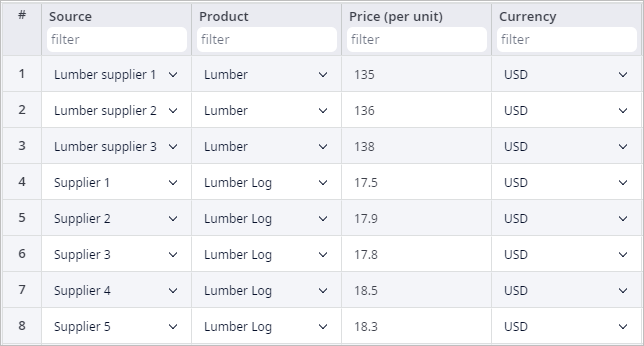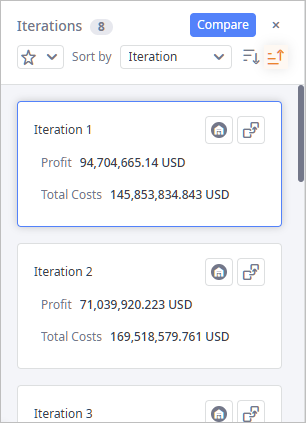In this example, you will learn how to increase the productivity of the supply chain by adding a cheaper way of obtaining the products. In addition, this example shows how to define a different cost for suppliers and customers for the same product.
It is too expensive for a distributor to buy lumber from suppliers. Starting its own production line might be more profitable.
In this region you can find:
- 3 timber mills with different types of production
- Production capacities
- Lumber log suppliers
Consider characteristics of the timber mills, and decide if we should start our own production or purchase finished goods. Note, that we are trying to find the most profitable combination of facilities considering the defined data.
In the process of selecting the best supplier, we should consider not only the distances between the facilities but also the cost of the product we want to purchase. The cost and the selling price of the product can be defined in the Products table and these values will be applied to all suppliers and customers. In real life, this does not happen often. There is a way to define the separate cost for every supplier and the selling price for every customer.
The selling price can be specified right in the Demand table in the Revenue column. As for the suppliers, the unique cost can be set in the Sale Batch table. This way every specified value will be applied to the corresponding facility.

The result of the optimization experiment shows that the profitable option would be to buy all timber mills in this region.
The Iterations panel shows the result of the experiment with all the possible combinations sorted per Profit KPI metrics. The top record of the table is the best one.

The data on other details is shown in the corresponding tables:
-
How can we improve this article?
-

